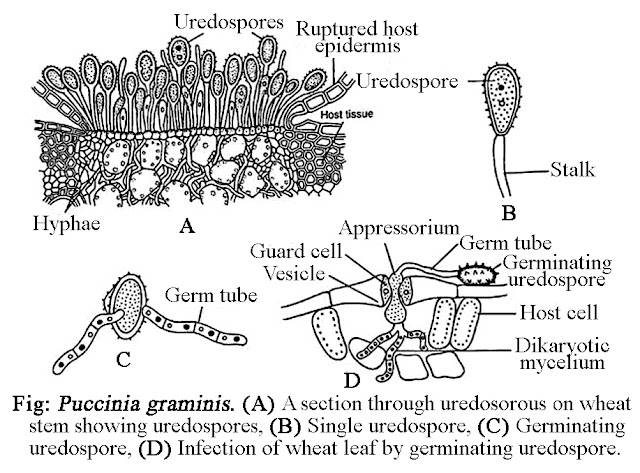CUCURBITACEAE
1. SYSTEMATIC POSITION:
Bentham
& Hooker
Division: Phanerogames (Seed Plants)
Class:
Dicotyledones
Sub-class: Polypetalae
Series:
Calyciflorae
Order: Passiflorales
Family: Cucurbitaceae
2. MORPHOLOGICAL
CHARACTERS:
Habit
– Mostly annual or perennial herbs or shrubs, climbing by means of tendrils.
Stem
– Herbaceous, rooting at nodes.
Leaves
– Alternate, broad, simple, but often deeply lobed, petiole long, tendrils
simple or branched, arising in the axil or opposite to the leaf at the node.
Inflorescence
– Often solitary, large and showy, sometimes in racemes or cymes or in
panicles.
Flower
– Unisexual, actinomorphic, epigynous.
Calyx
– Sepals 5, united, campanulate or tubular, imbricate.
Corolla
– Petals 5, united, inserted on calyx tube, valvate to imbricate.
Androecium
– Stamens apparently 3 but 5, anthers 3 but 5, anthers free or synandrous.
Gynoecium
– Carpel 3, syncarpous, ovary inferior, 3-locular with 1 to many ovules in
each loculus, placentation parietal, style 1, stigma 3, forked.
Fruit
– Berry or pepo.
4.
COMPARATIVE
SYSTEMATIC POSITION AND AFFINITIES:
The relationship of
this family is very much controversial. Different taxonomists have given
different systematic position to this family. According to Bentham &
Hooker, De Candolle, etc. this family is allied to Passifloraceae and placed
with perigynous polypetalae under Calyciflorae of the order Passiflorales.
Engler & Prantl, Eichler, etc. on the other hand have considered it to be very
advanced family of the sympetalae due to gamopetalous corolla, epigynous and
synandrous condition of the stamens. These botanists have placed this family
under Crcurbitales just after Rubiales and before Campanulales.
Cucurbitaceae
shows affinities with Campanulaceae in synandrous stamens, similar structure of
calyx and corolla and also in the presence of bi-collateral bundles.
5.
ECONOMIC
IMPORTANCE:
1. The
family Cucurbitaceae is famous for its edible fruits and vegetables like Cucumis melo (Musk melon), C. sativus (Cucumber), Cucurbita maxima (Sweet gourd), C. moschatus (Small sweet gourd), C. pepo (Ash gourd), Luffa acutangula (Angle gourd), L. cylindrical (Bath sponge gourd), Momordica charentia (Bitter gourd), Cephalandra indica (Scarlet gourd), Trichosanthes dioica (Potol), Lagenaria vulgaris (Bottle gourd), etc.
2.
Momordica subangulata is a climbing
shrub, grown as ornamental.
*************





Comments
Post a Comment